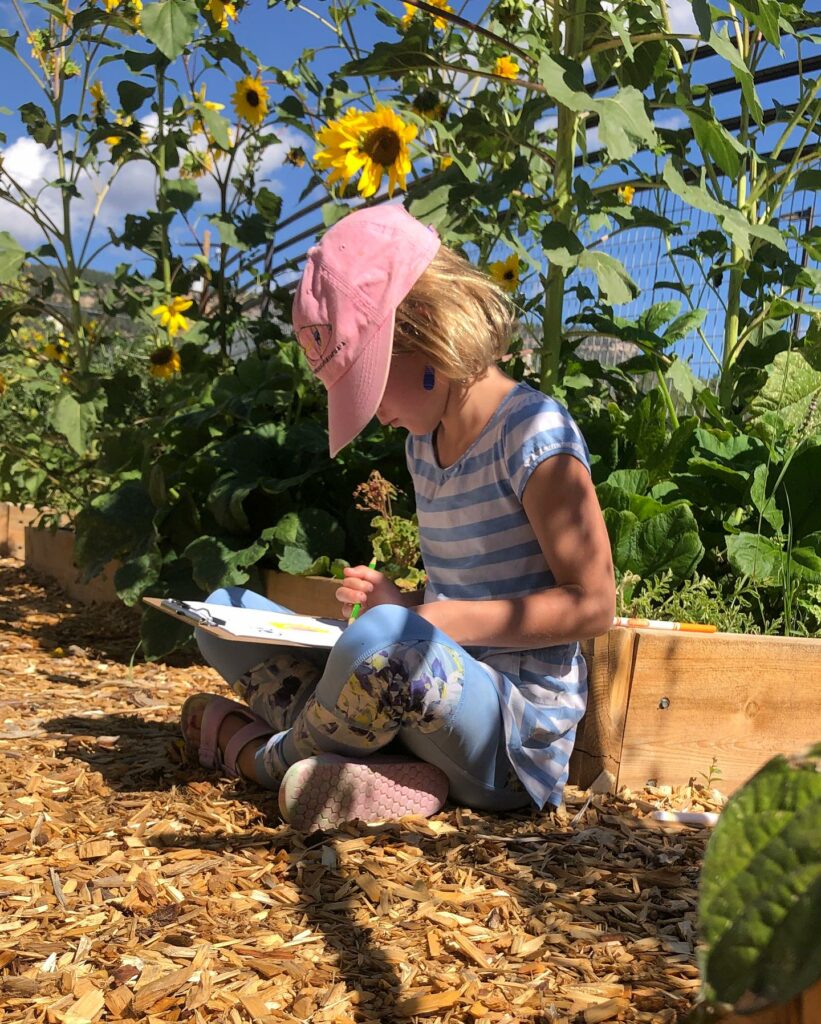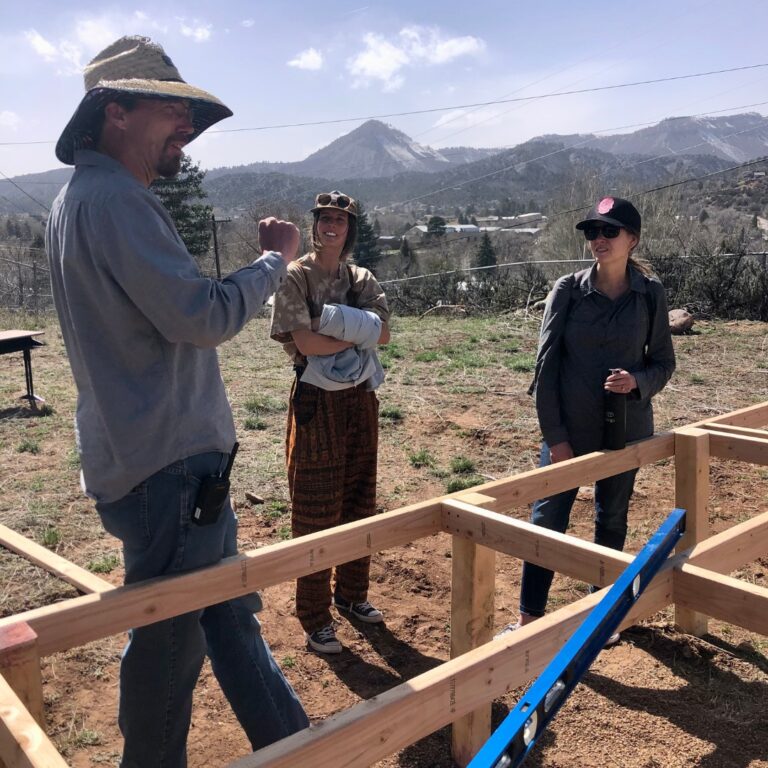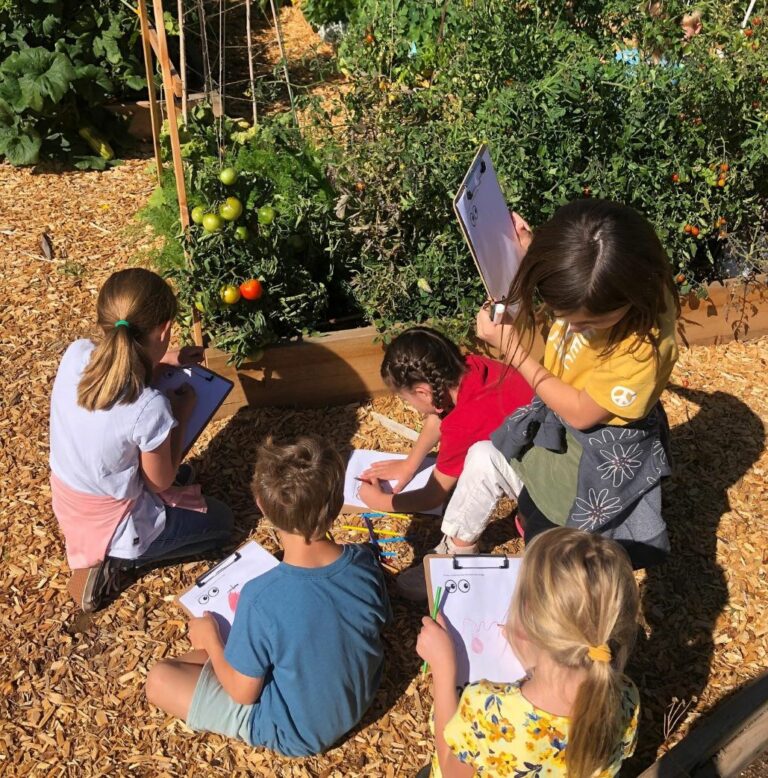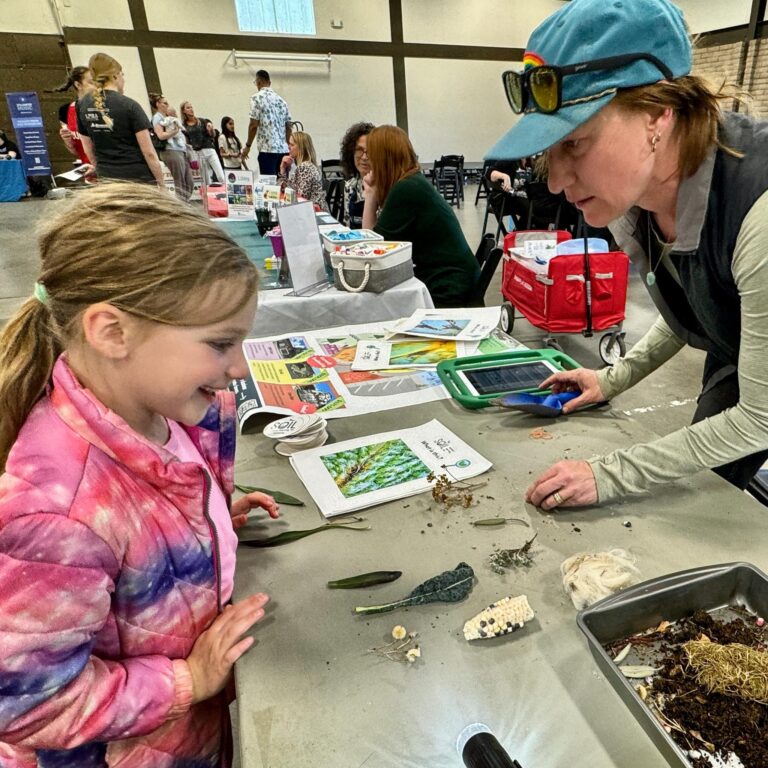SOIL Lab's Early Growth and Growing Goals
When the Ohana Kuleana Community Garden closed in 2022, Charlie Love was devastated. So were his students. For years, Love had conducted his sciences classes at the garden—a conveniently short walk from Riverview Elementary School. The outdoor, hands-on learning proved popular with the kids.
“I mean really popular!” Love says. He goes on, noting, “The kids, they love going to the garden. They just love science but going to the garden is like a big highlight. And then we translated that to great standardized testing scores, which is like not really the objective but it was just kind of like a side effect of kids getting really into science instead of dedicated science program.”
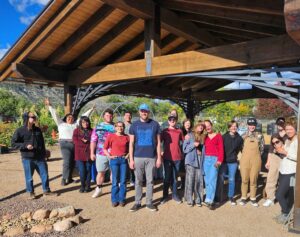
Being a wise and seasoned teacher, Love knew that every moment—even a sad one—is a learning opportunity. He explains, “Me and the students and community members just weren’t ready to let go, so we just kind of turned that around as like: All right, let’s think about how we could make something as good or better. So then there’s a lot of big sheets of paper and magic markers and hundreds of kids drawing their dream gardens.”
Rollercoasters. Ziplines. Waterslides. Giraffes. The kids’ ideas were limitless and, as it turns out, surprisingly actionable. For the last year, the bulk of their brainstorm has now morphed into an unconventional, innovative, and multifaceted community and educational garden project called the Seeds Outdoor Inspiration Lab, or the SOIL Outdoor Learning Lab. It’s an ever-growing experi-mint!
A Thyme for Change
Currently, the garden campus—situated next to Riverview Elementary School—stewards 100 raised or “boxed” garden beds, a pavilion, a local art installation, and other delights. Its future features will roll out in scheduled phases, eventually gracing the campus with a geodesic greenhouse grow dome, an educational hub with a commercial demonstration kitchen and classroom spaces, a soil shed for soil analysis and interpretive learning, an amphitheater with a solar array and EV charging stations, and a food forest with a farm market stand to name only a few highlights!
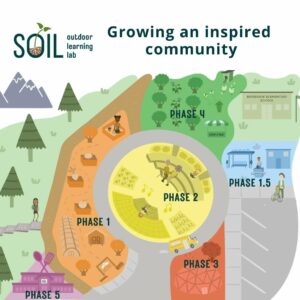 Ziplines, rollercoasters, waterslides, giraffes—those were the only ideas from the students that could not be incorporated into SOIL’s overall vision. Everything else, Love notes, received robust support from a broad range of sources. Love points to a wealth of private donors, including Rob Barker, along with unwavering support from the then new 9R Superintendent, Karen Cheser, and the City of Durango’s Parks and Rec division.
Ziplines, rollercoasters, waterslides, giraffes—those were the only ideas from the students that could not be incorporated into SOIL’s overall vision. Everything else, Love notes, received robust support from a broad range of sources. Love points to a wealth of private donors, including Rob Barker, along with unwavering support from the then new 9R Superintendent, Karen Cheser, and the City of Durango’s Parks and Rec division.
The ball was rolling. Downhill. Top-speed. Love was suddenly teaching full time and working as the director of this new, ambitious garden project. “That was wild!” He shakes his head, recollecting the hectic early days.
“That’s where I come in,” Allison Riederer laughs. She is the Lab’s Garden Manager. “When I moved to Durango, I was very committed to finding a way to be involved in the community. I was a dietitian for 10 years, as well as in public health and program management.” She started off on a a part-time contract that is now full-time and fully funded.
“This is a dream. It’s an absolute dream,” Riederer proclaims with pride as she surveys the garden. “The ability to get creative, to have a massive impact on the community, to be a part of something, to be challenged in a lot of ways…it’s truly a dream.”
Her characterization of the SOIL Lab as a dream is strikingly accurate—anything can happen in dreams and so it seems anything can happen at this garden. Can it educate thousands of students? Yes. Can it operate as a grow space for community and hobby gardeners? Yes. Can it serve local businesses and nonprofits? Yes. Can it counteract food insecurity in the surrounding communities? Again, the answer is yes. The real question is how can all this be possible?
Pictured above (from left): 1.) Charlie Love works with the Mountain Studies Institute. 2.) 9R students gather notes and grow big ideas in the garden. 3.) Allison Riederer helps learning sprout wherever she goes!
Scream and Sprout
“Please take the worms out of your pockets. Put them back in the dirt, please!”
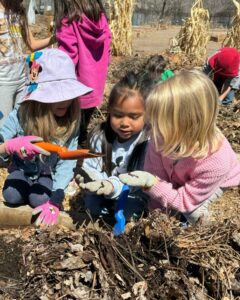 These instructions are repeated to the students who have stuffed countless earthworms in their pockets during their field trip to SOIL. Every spring and fall, the Lab welcomes 1,800 kids and teens from across the entire 9R School District. Half of the garden’s raised beds are devoted to student learning. Lessons are curated so that while the kids work with the soil, seeds, and plants, they learn about ecology, biology, nutrition, sustainability, and so much more.
These instructions are repeated to the students who have stuffed countless earthworms in their pockets during their field trip to SOIL. Every spring and fall, the Lab welcomes 1,800 kids and teens from across the entire 9R School District. Half of the garden’s raised beds are devoted to student learning. Lessons are curated so that while the kids work with the soil, seeds, and plants, they learn about ecology, biology, nutrition, sustainability, and so much more.
“In the fall, my favorite thing was kids just getting rounds of raw beets and loving them. It was their favorite thing!” Riederer says. “Or just handfuls of kale going in their mouths or handfuls of a mint from our herb beds or chives and them just saying, I love this! I have a seven-year-old; I can’t get her to eat those things at home.”
At the same time the garden serves the school district, it also serves the community, renting the other half of its available beds to the public. If drawn on paper, the totality of SOIL’s community connections would likely resemble healthy plant roots. They boast a slew of business sponsors who provide materials the garden easily repurposes. The Mountain Studies Institute, Fort Lewis College, Turtle Lake Refuge, and the Good Food Collective all have found niche ways to partner with SOIL and benefit the wider community, whether through sowing the seeds of native plants or through delivering garden excess to food insecure communities.
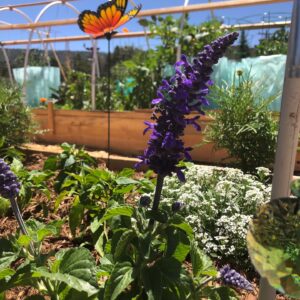 However, no garden grows without good soil. Love explains, “Building soil is a challenge. It takes years to mature and to build the microbiome that’s gonna make the nutrients available [to plants]. Using chemical fertilizers provide quick results but are not as good, not as nutritious of food, and not as sustainable for the environment, and not as solid or as productive in the long run. It was a struggle for us to find the hundreds of yards of soil to fill these beds.”
However, no garden grows without good soil. Love explains, “Building soil is a challenge. It takes years to mature and to build the microbiome that’s gonna make the nutrients available [to plants]. Using chemical fertilizers provide quick results but are not as good, not as nutritious of food, and not as sustainable for the environment, and not as solid or as productive in the long run. It was a struggle for us to find the hundreds of yards of soil to fill these beds.”
Fortunately, Table to Farm stepped in with a big donation of its artisan compost soil—plus a few green buckets to boot. The result was not just a super productive soil that had the box beds bursting at the seams during last year’s particularly challenging growing season, but also another learning opportunity for students.
As Love explains, “In one day, [the kids] see like a bag of carrots that came in their school lunch and then they don’t finish them.” He describes how those carrots go in a green bucket. Then he or Riederer can take kids over to a bag of T2F soil and say, “Hey that stuff you put in the bucket, this is what it’s going to look like in a few months. That’s what happens.”
Riederer echoes this sentiment, stating, “It’s been such a gift to be able to talk about that cycle. Their hands are in it. They’re holding it. It’s really, really experiential for them. And having the ability to show that full cycle and connect it to things they see outside the garden, like the Table to Farm buckets, is just really valuable.”
From Secret Garden to Public Paradise
Starting this summer, the Lab will open to the public every Wednesday from 6-7pm. Enjoy a stroll through the verdant garden beds. Take in the art installations. Don’t be surprised if someone is playing some live music. Pluck some snacks off the public berry and veggie plants (they’ll be clearly marked). Then, seek some late day shade under the pavilion and take in the sweeping views of town and the majestic mountains.
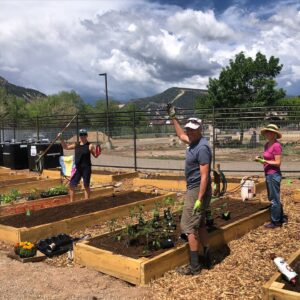 And should there be a muddy, weedy gardener working on their bed, Riederer strongly recommends striking up a conversation.
And should there be a muddy, weedy gardener working on their bed, Riederer strongly recommends striking up a conversation.
“An overarching theme [of this garden]” she explains, “is having the opportunity to build community-wide resilience. In the sense of people having a connection to growing…to producing food…to understanding where they can find food if they need help finding food…to meeting their neighbors. All these different threads demonstrate the value of people coming out of their houses and off their screens and back in person. Hands in the dirt as opposed to eyes on a screen, right?”
In so many ways, SOIL is like real soil: interconnected and incorporated, expanding and extending pathways to resources, nutrition, wellness, and learning. And it’s that fundamental soilyness that Love wants to nurture as the SOIL Outdoor Learning Lab comes to fruition.
Love says, “I would love to see it be a model or a hub where there’s like satellite growing areas. It would be great to see community gardens at every school, for example. Or in town, like at city parks and in those public places, so ideally, wherever people live, they have a garden they can walk to.”
“These types of things are thought to be impossible” Riederer asserts, “and so by doing it and saying yeah this is possible; let’s think creatively; let’s think outside the box. Yes, it takes hard work. Yes, it takes 300 volunteers contributing over 900 hours of volunteer time, but it’s possible and it is not possible if you don’t try.”
Proof that everything is possible in the garden of rollercoasters, ziplines, waterslides, and giraffes.
To learn more about the SOIL Outdoor Learning Lab, visit online or stop by 2900 Mesa Ave during public hours. Order your bag of Table to Farm’s artisan soils today!

